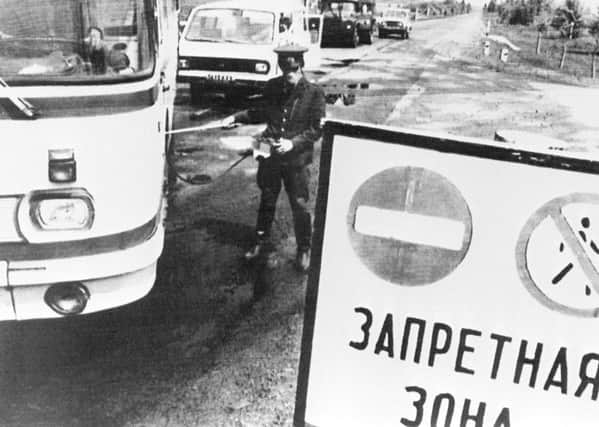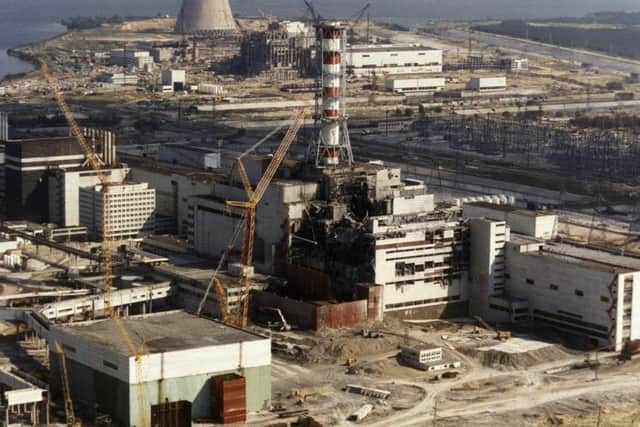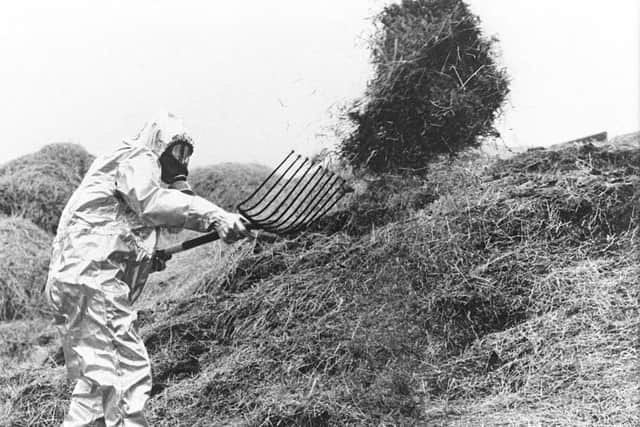Nuclear power is safe option in fight against climate change despite Chernobyl disaster - Patrick Hall


Boris Johnson has promised a ‘clean energy revolution’. Well, we are going to need all the forms of carbon-free energy sources we can find. And the UK should be fully behind nuclear power.
Replacing fossil fuels with entirely renewable energy sources on the timescale that is needed is a monumental challenge, and not one that doesn’t come with setbacks – notably, the issue of intermittency. Nuclear power generation produces no carbon emissions, and unlike renewables, it isn’t plagued with the problem of intermittent power generation.
Advertisement
Hide AdAdvertisement
Hide Ad

But it is plagued with something else: public hostility. Those who are hostile towards nuclear power typically hold two major concerns: safety and waste.
When you compare the death rate from energy production per TWh (terawatt hour) of different energy sources worldwide, it becomes clear that nuclear power is actually one of the safest forms of energy generation in existence today.
For every TWh of energy generation, coal accounted for 57.34 deaths, whilst oil was responsible for 18.43 deaths, biomass 4.63 and gas 2.32. A mere 0.07 deaths were attributed to nuclear power. In other words, coal is almost 820 times more deadly than nuclear power.
Advertisement
Hide AdAdvertisement
Hide AdOutdoor air pollution kills 4.2 million people a year (over 11,000 people every day when spread across a year). What is the primary cause of air pollution? Fossil fuels, especially coal.


In the 60 years of nuclear power history there have been three major events that captured the public’s attention: Three Mile Island, Fukushima and Chernobyl.
Three Mile Island, occurring in 1979, was the result of a partial meltdown of the plant’s reactor number two. No one died from the incident, and neither the Pennsylvania Department of Health nor a dozen studies conducted after the event found adverse health effects as a result of the incident. Nevertheless, it attracted public attention and fuelled the anti-nuclear argument.
In 2011, the Fukushima nuclear powerplant meltdown was caused by a tsunami striking the coastline of Japan, where the powerplant was situated, after a magnitude 9 earthquake occurred off the Japanese coast. Whilst thousands perished as a result of the geological disaster, no acute radiation injuries or deaths were attributed to the Fukushima nuclear incident.
Advertisement
Hide AdAdvertisement
Hide AdPerhaps most infamous of all, and recently brought to the fore of popular culture thanks to HBO’s Chernobyl mini-series, was the 1986 Chernobyl nuclear disaster. High radiation exposure killed 28 people, and a further 134 plant staff and emergency personnel got acute radiation syndrome as a result of high dose radiation exposure. Following the incident, there were 4,000 reported cases of thyroid cancer. However, these cases had a 99 per cent survival rate.
Contrast this with the statistics on death by energy source, and it is clear that coal kills more people every couple of weeks than nuclear power has in its entire 60-year history. Despite this, nuclear power unjustifiably continues to be a prime target for those who fear it is unsafe.
The perceived issue of nuclear waste is another point of contention when it comes to public opinion on nuclear power. But nuclear waste is already a solved problem. We know how to treat and store nuclear waste, as is practised all over the world. Nuclear waste, unlike the by-products of fossil fuel energy generation (ash contaminating water quality and air pollution), does not harm anybody once it is stored. Furthermore, nuclear power is the only form of large-scale energy production that manages and pays for 100 per cent of its waste stream.
Future nuclear technologies are likely to play a role in Britain’s energy future, with the Government’s recent £200m funding commitment to developing a nuclear fusion power station by 2040. Unlike nuclear fission, nuclear fusion won’t generate the level of nuclear waste that comes from fission.
Advertisement
Hide AdAdvertisement
Hide AdWell-meaning environmentalists who object to nuclear power can do more harm than good in our fight against climate change, as fossil fuels are used in replacement of nuclear power to make up the shortfall in energy generation from renewables. Notable environmentalists such as Bill Gates and climatologist Dr James Hansen are staunch supporters of nuclear technology in energy generation to reduce carbon emissions.
The numbers speak for themselves; nuclear power is safe. It is time to clear up the misconceptions surrounding nuclear power and harness this carbon-free resource in our fight against climate change.
Patrick Hall is a researcher at Bright Blue, an independent think-tank for liberal conservatism.